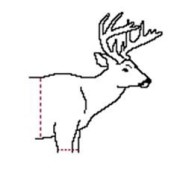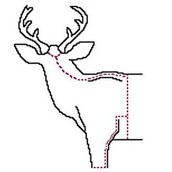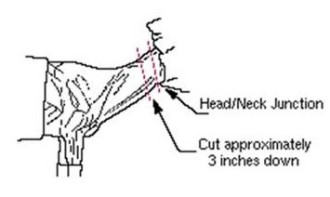Taxidermy Tips
As soon as the animal hits the ground, the clock is ticking. Have a plan on how you will handle your trophy, before you go hunting or fishing, The better your field care is of your animal, the better your finished mount will be. Take coolers, terry cloth towels, nylon stockings and the best digital camera that you can afford with you on your outing.
Do your homework before your excursion to find the best taxidermist out there. Go and talk to each taxidermist that you are considering; see if they are full-time or part-time, how long their turn around time is, and look closely at their display mounts.
Fish-Keep the fish in a live well, wrap them in a terry cloth towel, place them carefully in a plastic bag and freeze them as soon as possible.
Repo fish-Take your photos with a high quality digital camera. Measure the length, girth and weigh it, if possible before letting it go.
Birds-Place the bird head first into a nylon stocking, so that all of the feathers are going in the same direction, and freeze as soon as possible.
Deer, Elk or Antelope-DON'T DRAG YOUR TROPHY! Dragging damages the hairs for a shoulder mount. Place the animal in a sled or cart. Take your photos in a safe place with good lighting. Warm weather, blood and bacteria can ruin a cape, as well as any liquid or debris that may be in the bed of your pickup. You can take your deer to your chosen taxidermist if you are unsure of your caping abilities, Brian will be happy to offer this service to any of his customers.
Hoist the animal up by the rear legs and cape out the mount before field dressing it.
Cut a line around the body, in a circular line from the top of the shoulders to the back of the front legs.
Make a cut up the back of the legs and 90 degrees into your first cut, then cut a couple of inches off of the front legs.
Tube out, up to about six inches from the base of the neck. Cut off the head with the cape and take it to your taxidermist.
These cuts should allow ample hide for the taxidermist to work with in mounting. REMEMBER, the taxidermist can cut off excess hide, but he can't add what he does not have. When field dressing a trophy to be mounted, do not cut into the chest or neck area. If blood does get on the hide, wash it off with snow or water as soon as possible.
If you do put your mount in the freezer, make sure it is well wrapped, as it can freezer burn easily and the cape will be ruined. Make sure the animal is completely sealed in several garbage bags or special game bags.




